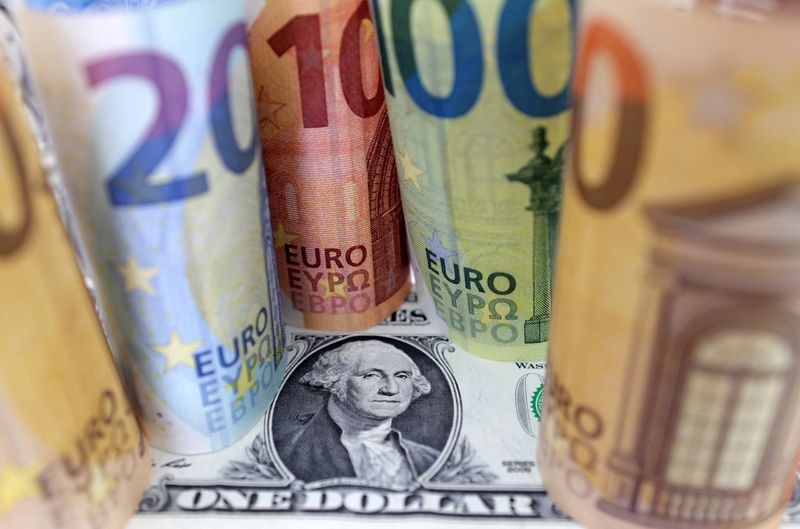Forex
Dollar pares gains after US retail sales miss expectations in May

By Saqib Iqbal Ahmed
NEW YORK (Reuters) -The dollar pared gains against the euro on Tuesday after retail sales data indicated signs of exhaustion among U.S. consumers, boosting the case for Federal Reserve rate cuts later this year.
U.S. retail sales increased less than expected in May as lower prices for gasoline and motor vehicles weighed on receipts at service stations and auto dealerships.
The trend in sales growth has been slowing as higher prices and interest rates force households to prioritize essentials and cut back on discretionary spending.
“It may have come later than initially expected, but the tight financial conditions engineered by the Fed finally appear to be straining household budgets this year,” Stuart Cole, chief economist at Equiti Capital.
“But a softer pace of consumption may actually be welcomed by the Fed, as it makes the task of returning CPI back to target that much easier, especially given the key role domestic consumption plays in driving U.S. economic activity,” Cole said.
The euro was 0.07% lower at $1.0727, having slipped as low as $1.071 earlier in the session.
Against a basket of currencies, the dollar was up 0.1% at 105.40.
Fed Funds futures implied a 67% probability of at least one rate cut by the September Fed meeting, up from 63% a day ago.
Philadelphia Fed President Patrick Harker revealed on Monday that he backs only one interest rate cut this year, but left the door open to changing his view depending on incoming data.
A long list of Fed officials take to the podium at various venues later in the day, including the Boston Fed’s Susan Collins and the Richmond Fed’s Thomas Barkin.
Last week, mild U.S. inflation readings contrasted with an overall hawkish stance by Fed officials, who trimmed their previous median projection for three quarter-point rate cuts this year to one.
Last week’s rally in the dollar was mostly driven by a sharp euro selloff after French President Emmanuel Macron called a shock snap election in response to his ruling centrist party’s trouncing by Marine Le Pen’s eurosceptic National Rally in the European Parliament elections.
The euro has stabilised since.
“Over the weekend, France’s Le Pen said that she would be ready to work with President Macron and would not seek him out,” said Mohit Kumar, chief economist for Europe at Jefferies.
“A portion of the recent risk off moves have been driven by fears of ‘Frexit’ and euro area breakup,” he said. “Those fears are overblown.”
The dollar was little changed against the yen at 157.81 yen, holding below Friday’s six-week high of 158.26.
Sterling slipped 0.06% to $1.2697 as investors waited for inflation figures on Wednesday and the Bank of England’s interest rate decision the day after that.

Meanwhile, the dollar was 0.3% higher after the Reserve Bank of Australia’s held rates steady on Tuesday. “The RBA’s position was well-telegraphed: they’re in wait-and-see mode until they get more inflation data,” said NAB’s Catril.
In cryptocurrencies, bitcoin fell about 2% to $64,906, a one-month low.

 Forex3 years ago
Forex3 years agoForex Today: the dollar is gaining strength amid gloomy sentiment at the start of the Fed’s week

 Forex3 years ago
Forex3 years agoUnbiased review of Pocket Option broker

 Forex3 years ago
Forex3 years agoDollar to pound sterling exchange rate today: Pound plummeted to its lowest since 1985

 Forex3 years ago
Forex3 years agoHow is the Australian dollar doing today?

 Cryptocurrency3 years ago
Cryptocurrency3 years agoWhat happened in the crypto market – current events today

 World3 years ago
World3 years agoWhy are modern video games an art form?

 Commodities3 years ago
Commodities3 years agoCopper continues to fall in price on expectations of lower demand in China

 Economy3 years ago
Economy3 years agoCrude oil tankers double in price due to EU anti-Russian sanctions





















